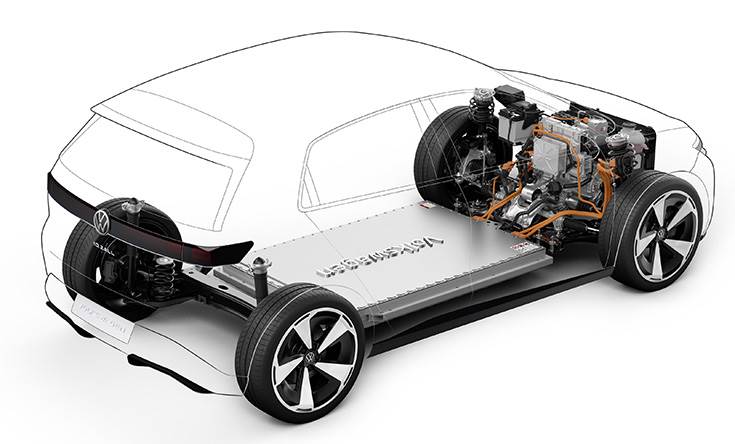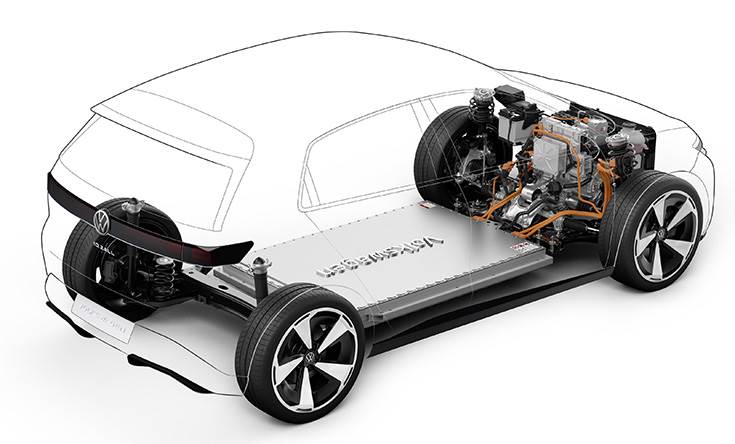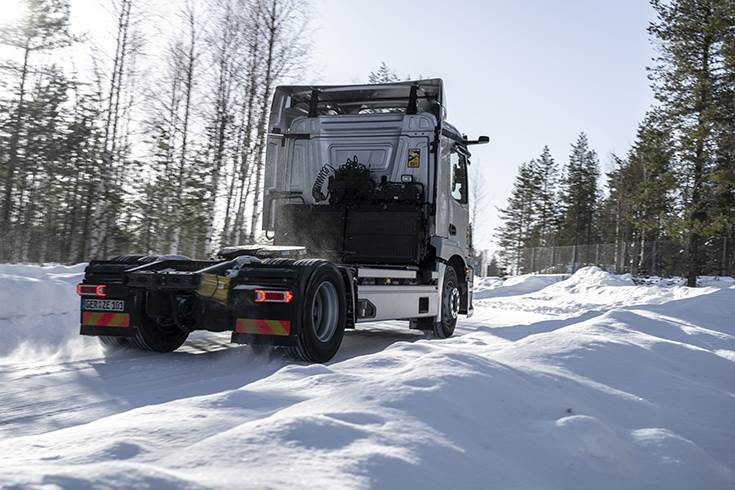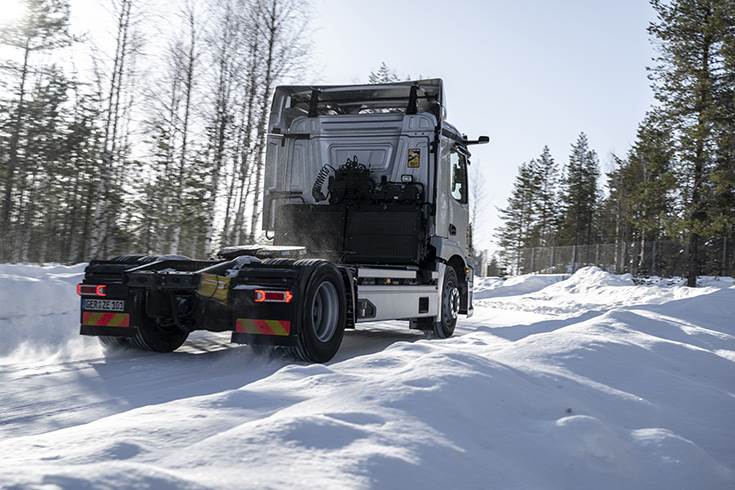The new Volkswagen ID 2all concept previews a new sub-22,000-euro electric car set to go on sale in 2026 – and showcases the brand’s new design language, which draws from classic models such as the Volkswagen Beetle, Golf and Polo. The new Peugeot e-208 and Vauxhall Corsa-e rival will be the first model to use the long-anticipated… Continue reading Volkswagen ID 2all to be first model to use MEB Entry platform
Category: US Motoring Press
Volkswagen ID 2all to be first model to use MEB Entry platform
The new Volkswagen ID 2all concept previews a new sub-22,000-euro electric car set to go on sale in 2026 – and showcases the brand’s new design language, which draws from classic models such as the Volkswagen Beetle, Golf and Polo. The new Peugeot e-208 and Vauxhall Corsa-e rival will be the first model to use the long-anticipated… Continue reading Volkswagen ID 2all to be first model to use MEB Entry platform
Mercedes-Benz tests electric trucks in the Arctic Circle
Mercedes-Benz has put its upcoming electric trucks to the test in bone-chilling cold, ice and snow and says that they have successfully achieved their goals in the latest round of endurance tests conducted over six weeks. Haulage companies are placing the same demands on battery-electric trucks as on their counterparts with conventional diesel engines. Even… Continue reading Mercedes-Benz tests electric trucks in the Arctic Circle
Mercedes-Benz tests electric trucks in the Arctic Circle
Mercedes-Benz has put its upcoming electric trucks to the test in bone-chilling cold, ice and snow and says that they have successfully achieved their goals in the latest round of endurance tests conducted over six weeks. Haulage companies are placing the same demands on battery-electric trucks as on their counterparts with conventional diesel engines. Even… Continue reading Mercedes-Benz tests electric trucks in the Arctic Circle
GM studying artificial intelligence assistant that could answer driver questions
General Motors is studying the possibility of an artificial intelligence voice assistant in future vehicles, according to the company. GM Chair and CEO Mary Barra, who was asked for details Tuesday by Fox Business channel anchor Liz Claman, referenced the company’s Ultifi “end-to-end” vehicle software platform. “It’s one of many things we can put on… Continue reading GM studying artificial intelligence assistant that could answer driver questions
History buffs cast shade on Chevrolet for gaffe over famed Michigan lighthouse
General Motors’ Chevrolet dealers in Michigan like to show off vehicles on social media by placing them in front of recognizable landmarks. But when they recently put a photo on Instagram of a Silverado pickup in front of the Fort Gratiot Lighthouse — one of the most famous lighthouses in the state, maybe even the… Continue reading History buffs cast shade on Chevrolet for gaffe over famed Michigan lighthouse
BMW expects higher margin and deliveries in 2023 amid electric rollout
Spencer Platt | Getty Images News | Getty Images German automaker BMW on Wednesday set out targets to slightly increase margins for its automotive segment and raise deliveries this year, as it pushes ahead with the rollout of its electric fleet. The company said it expects an EBIT (earnings before interest and taxes) margin of… Continue reading BMW expects higher margin and deliveries in 2023 amid electric rollout
Parts woes: Corvette plant down next week
General Motors Co. confirmed Wednesday it’s halting production of the Chevrolet Corvette in Bowling Green, Kentucky, next week because of an unspecified parts shortage. “Our supply chain, manufacturing and engineering teams are working closely with our supply base to mitigate any further impact on production to meet the strong demand for our products,” spokesperson Dan… Continue reading Parts woes: Corvette plant down next week
Honda recalling 500,000 vehicles to fix seat belt problem
Detroit – Honda is recalling a half-million vehicles in the U.S. and Canada because the front seat belts may not latch properly. The recall covers some of the the automaker’s top-selling models including the 2017 through 2020 CR-V, the 2018 and 2019 Accord, the 2018 through 2020 Odyssey and the 2019 Insight. Also included is… Continue reading Honda recalling 500,000 vehicles to fix seat belt problem
House panel advances $575M in state incentives for battery plant projects
Proposals to grant a combined $575 million in state incentives to three major battery manufacturing projects advanced Wednesday with approvals from the Democratic-controlled Michigan House Appropriations Committee. The committee, on a 16-12 party-line vote, approved transferring $175 million for a Gotion Inc. project outside of Big Rapids, $200 million for an Our Next Energy project… Continue reading House panel advances $575M in state incentives for battery plant projects



